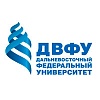Andrey Gubin: Russia and India - common security agenda
October 6, 2017
0
comments
1897
Views
Add to reader
Print
In
Log in if you are already registered
In 1947, several months before official claiming of Indian Independence, Soviet Union became the very first nation acknowledged New India. In 1971 Moscow and Delhi signed Treaty on Peace, Friendship and Cooperation which was resumed in 1993 due to Soviet Union collapse and complemented in 2000 by Declaration on Strategic Partnership, stressing special format of relationship. The most significant spheres of mutual cooperation traditionally are both global and regional security, conflict peaceful resolution and military collaboration.
The USSR assisted to Indian Army in the war for Bangladesh independence in 1971 as well as in mitigation of conflicts with China and Pakistan in 1962 and 1965 respectively. However, India used to be one of inspirers and advocates of non-alignment movement – the informal third power during the Cold War, thus they not always and obligatory supported Russian political position. Frankly speaking, the Golden Age for bilateral partnership was in 1960-70s when China appeared to be a rival for the USSR because of ideological discrepancy. Even in early 2000s when Moscow simultaneously proclaimed course for strategic partnership with India and China, the latter was hardly happy. “Strategic Triangle” pattern offered by former Russian foreign minister Evgeniy Primakov pretty rapidly became obsolete mostly because of Sino-Indian tensions as well as of Delhi’s reluctance to join Anti-Western alternative vector of world politics including forming NATO counter-balance.
As Russian President Vladimir Putin wrote in the article dedicated to the 70th Anniversary of establishing diplomatic relationship, total value of military contracts since 1960 has been outpacing $65 billion furthermore Indian demand from 2012 to 2016 exceeded $46 billion. Remarkably, since 1990s India followed China in structure of Russian military cooperation. However, in early 2000s Moscow started to export more sophisticated weapon to India than to China ruled by geopolitical reasons. Moreover, Chinese partners repeatedly violated contracts’ terms, broke licenses and illegally copied for instance Su-27 fighter jets, S-300 air-defense systems, Kilo submarines etc. In 2004 more than 70% of military vehicles India obtained from Russia.
Respectively, in 2014 Russian addressed 36% of the entire military export to India for the price of $5 billion. The most recent contracts presume large order for Kamov helicopters, including facilitating assembling plant in India as well as Moscow’s decision to provide Indian Air Defence with S-400 Triumph hi-tech system. Both parties are very much proud of joint development of BraMos missile.
India also is the only nation has been exploiting nuclear attack submarine leased in Russia for 10 years in 2012. They already had such an experience in 1988-1991 and the new ship remained the same name – Chakra. Russia commissioned to Indian Navy Vikramaditya carrier (former Admiral Gorshkov) and is participating in next ship – Vikrant - building. Indian Navy as well obtained several modern escort ships and submarine from Russia. Moscow and Delhi regularly conduct military drills but non-directed to some precise nation or grouping, concentrating on anti-terrorist, anti-pirate, search and rescue missions.
Russia supports Indian rights in the Arctic Council as it’s an observer party and can participate limitedly in scientific and economic activities. One of the most disputable issues in bilateral agenda in the Indian nuclear weapon as India didn’t enter Non-Proliferation regime. Russia is highly concerned by reciprocal nuclear deterrence situation between India and Pakistan however is still ready to support Indian claims for permanent membership in the UNSC. Before it is implemented, India can sustain guarantees of non-deployment its nuclear weapon and non-using first. Today strategic triangle is substituted by BRIC format, meanwhile members are united only by non-presenting in G7. There is some ideological basis within SCO and after tandem entering of India and Pakistan into this institution the real possibility of Sino-Indian rivalry removal. Nevertheless Belt and Road forum held in China this May lacked Indian presence as Delhi is highly concerned by rising Chinese influence in Pakistan, Sri-Lanka, Pakistan and Myanmar. Considering this, the Moscow’s top priority is to harmonize all Eurasian strategies of the Asian nations and collecting all leverages into one flux to establish peaceful and flourishing Gran Eurasian common space.
One of the signal of florishing bilateral ties and rising Indian interest to initiatives in Russian Far Eat is presence of Indian Foreign Minister Sushma Swaraj at Eastern Economic Forum held in Vladivostok this September.
Author: Andrey Gubin, RISS expert, associate professor at FEFU, Ph.D.
Share this article
OTHER RECORDS
Andrey Gubin: Parade never ends - geopolitical context of Russian Day of the Navy ceremony
August 2, 2021
Far Eastern Federal University Experts




